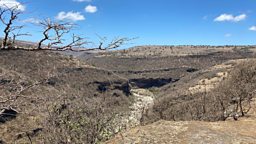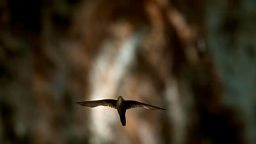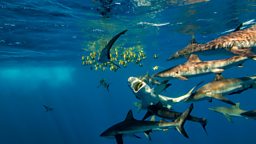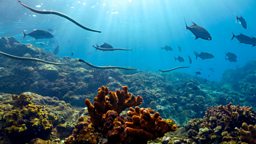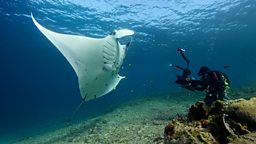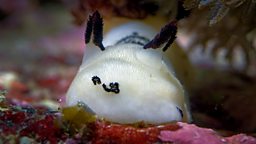The challenges of filming in Asia鈥檚 oceans
By Mark Wheeler, Producer / Director

There’s something special about being underwater, it’s magical and unearthly, a world of almost zero gravity and fantastical animals that the wildest minds could hardly imagine.
...it鈥檚 magical and unearthly, a world of almost zero gravity and fantastical animals...
But we’re not exactly built for a life underwater! We need all sorts of gear and compressed gases just to breathe. And if you throw in the challenge of filming, it all gets a whole lot trickier. Wildlife filmmaking on land takes time and patience, with crews spending hours or even days in hides, on plains, and in jungles to get “the shot.” Underwater, you’re on a time limit, dictated by how much air you’ve got left. There are currents to battle, and danger can come at you from any direction in the 3D world you’re floating around in.
Yet, in a strange way, all these challenges make filming underwater even more enticing. And there are a few tricks that make it (just about) possible:
Rebreathers: Rebreathers are special breathing systems, originally developed by the military, that let you stay underwater much longer than regular SCUBA gear. They work in a closed loop – exhaled gas is “scrubbed” to get rid of the carbon dioxide, and then recirculated back to be inhaled again. A complicated computer runs the whole setup, deciding when to add more oxygen to keep you alive.
The best things about rebreathers are that they let you stay underwater for hours, and they don’t release bubbles like traditional diving systems – so you don’t spook the marine life. We used rebreathers on loads of the sequences in Asia: Beneath the Waves.
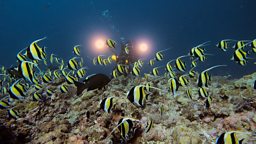
Sliders, splits and balloons: Keeping a camera steady enough to capture world-class footage underwater is no mean feat. We rely on heavy underwater rigs to control the camera and keep it steady. We use sliders that sit on the seafloor and gently move the camera from side to side, creating cinematic movements like those in the sea bunny sequence. We also use “quad-pods” that allow us to suspend the camera close to subjects on the seabed. For surface shots, we use specially-designed floating rigs that let operators capture “split-shots” (half above, half below water), which were essential telling the story of Indonesia’s whirlpools.
Keeping a camera steady enough to capture world-class footage underwater is no mean feat.
But all this kit is heavy and very hard to swim with, so whenever we are filming with this type of gear we use lift-bags – essentially underwater balloon that enable the kit to be gently floated around – it’s not a speedy process but it would be impossible to film some things without them.
Filming the big close up: With all the challenges of working underwater, some subjects that are essential to the story are simply impossible to film in the open ocean. Trying to capture the hatching of tiny firefly squid eggs was one of these challenges. The eggs take ten days to develop, and they could hatch at any time. They’re also so small that, once lost in the sea, finding them again would be impossible. In these rare cases, we work closely with scientists to capture moments we couldn’t otherwise get, in a controlled tank environment. This approach allowed us to tell the complete story of a firefly squid—from egg-laying to hatching.
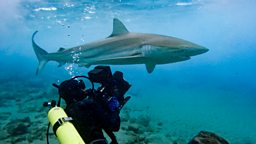
Super-fast flow: Rapid movement poses a real challenge to underwater filming. Many of the animals that I wanted to feature lived in areas where the currents were too strong to keep up with. Other creatures swam faster than our divers ever could. When this happens, we have a couple of options:
Other creatures swam faster than our divers ever could.
Underwater scooters: These are small, propeller-powered torpedoes with handles for your hands or straps for your legs. You control the speed with a throttle and steer by pointing them where you want to go. They’re ideal for following animals that swim at a steady pace, like whales, but aren’t racing away.
Pole-cam: This setup was invaluable when filming the sharks and Moorish idols sequence. It involves attaching a camera to a pole mounted on the side of a boat. A system of clamps and lines absorbs the force of the fast-flowing water, allowing speedy subjects to be filmed safely from the boat.
